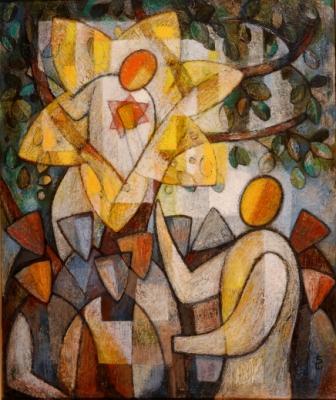Nov
15
2010

“Screw the truth into men’s minds.” – Richard Baxter
Doug Wilson, (in an interview a while back concerning Collision, I think), spoke about “copiousness.” It is the Christian’s practice of picking up striking thoughts and illustrations from reading, and from life, for future use. He advocates keeping a Commonplace book to jot things down.
“Keep a commonplace book. Write down any notable phrases that occur to you, or that you have come across. If it is one that you have found in another writer, and it is striking, then quote it, as the fellow said, or modify it to make it yours. If Chandler said that a guy had a cleft chin you could hide a marble in, that should come in useful sometime. If Wodehouse said somebody had an accent you could turn handsprings on, then he might have been talking about Jennifer Nettles of Sugarland. Tinker with stuff. Get your fingerprints on it.” [1]
He describes an incident that makes this book (or blog or mental practice) sound more like keeping caches of ammunition near at hand. Continue reading
2 comments | tags: Chesterton, Doug Wilson, Ecclesiastes, Hermeneutics, Revelation, Spurgeon, Tabernacles | posted in Apologetics, Biblical Theology, Christian Life, Quotes
Oct
2
2010

The content of this post has been revised and included in Bible Matrix II: The Covenant Key.
___________________________________________
[1] See Behold Your Mother.
[2] See Incantation or Incarnation.
[3] Ray R. Sutton, That You May Prosper, pp. 73-75. Forget Calvin. Forget Barth. This book is a must-read.
[4] See Little Man With No Hair and Veiled Lawlessness.
Comments Off | tags: Covenant curse, Covenant Theology, Postmillennialism, Ray Sutton, Tabernacles, Zechariah | posted in Bible Matrix, Biblical Theology, Ethics, Quotes
Aug
30
2010
or Who Is My Neighbour?
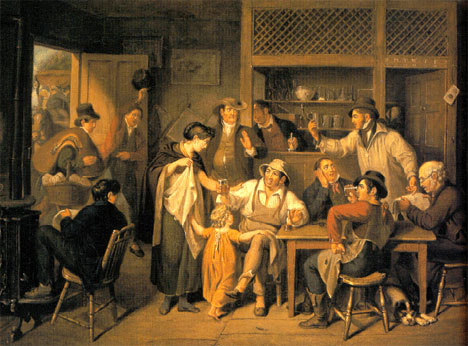
The content of this post has been revised and included in Bible Matrix II: The Covenant Key.
1 comment | tags: Feasts, Literary Structure, Luke, Tabernacles | posted in Bible Matrix, Christian Life, Creation, Ethics
Aug
9
2010
An Exhortation to Be A Fruitful Tree
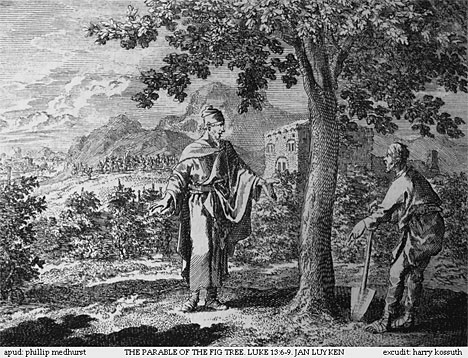
Tabernacles was the final annual feast, a Godfest to be thrown by Jews as a ministry to Gentiles. At the Feast of Clouds [1], every household temporarily became a new house of God, a “local branch” of the Tabernacle, a “priesthood of all believers.” Of course, we see this fulfilled in the book of Acts. Just as we see Paul exhort the Ephesians (Gentiles!) to put on the mediatorial body-armour of the High Priest, [2] his final exhortation to the Roman Christians alludes to not only Israel’s feasts but Israel’s priesthood. Pretty much every church he established was a “booth” made of natural Jewish branches and ingrafted Gentile branches. [3] At Pentecost, the same cloud that received Jesus filled the house. [4] Now every household of faith was a Tabernacle, a glorious cloud with a government of human angel-elders. [5] In the Bible’s literary structure, a recurring motif at Tabernacles is good fruit, godly offspring. God wants more than just a covering of leaves. As in Eden, future generations hang upon wise government.
Continue reading
8 comments | tags: AD70, Add new tag, Atonement, Doug Wilson, Feasts, Genesis, Laver, Literary Structure, Paul, Roman Catholicism, Romans, Systematic typology, Tabernacles, Temple | posted in Bible Matrix, Biblical Theology, The Last Days
Aug
4
2010
or Festivals from the Abyss
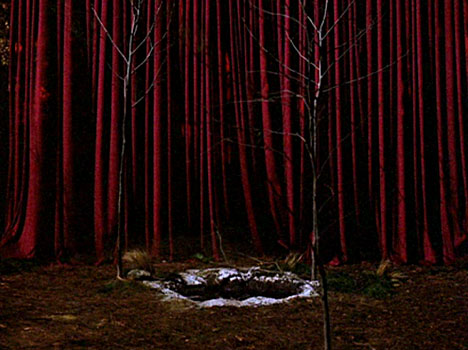
Herod, when he saw that he was deceived by the wise men, was exceedingly angry; and he sent forth and put to death all the male children who were in Bethlehem and in all its districts, from two years old and under, according to the time which he had determined from the wise men. Then was fulfilled what was spoken by Jeremiah the prophet, saying: “A voice was heard in Ramah, lamentation, weeping, and great mourning, Rachel weeping for her children, refusing to be comforted, because they are no more.” Matthew 2:16-18
Continuing from New Covenant Virility – 2
GLORIFICATION: (Tabernacles feast, marriage, children, rest)
Wow. This last bit really rubs in the kind of offspring (fruit) Israel gave God. It is the seventh stanza of this section, yet in itself it has seven stanzas. Each section submits itself to the common themes in Glorification, yet each section reiterates one step the sevenfold pattern. Tabernacles was the big feast, so in this final ascerbic prophecy, the prophet turns the annual Feasts into curses. [1] What sublime poetry is Isaiah.
Tabernacles is the Feasts of Booths. It is God’s people reaching maturity as a great tree and sheltering the nations. The cycle began with dry trees (eunuchs, etc.) being made fruitful. Here, God lays the ax to the root of the old tree.
Continue reading
1 comment | tags: Altar of the Abyss, Cyrus, Darius, Esther, Isaiah, Solomon, Tabernacles, Un-Passover | posted in Bible Matrix, Biblical Theology, The Restoration Era
Jul
9
2010
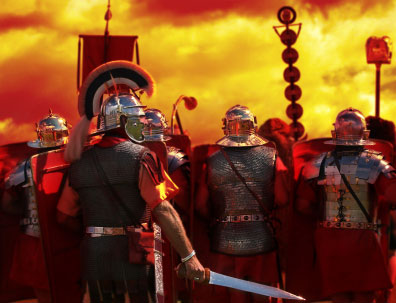
Michael F. Bird recently wrote:
The Jerusalem council achieved a via media by finding in Scripture a justification for the inclusion of Gentiles within the church without requiring circumcision and placing upon Gentiles only the obligation to avoid idol food and sexual immorality. Yet the Jerusalem council also permitted the existence of two parallel theologies: one theology where the Gentiles were uncircumcised equals in a renewed Israel with holiness constituted by the Spirit and another theology where uncircumcised Gentiles were guests in an Israelite remnant that still defined holiness through Torah observance. The Jerusalem council’s decisions seem optimized in a setting where Jewish Christians and Gentile Christians remain in parallel rather than integrated, especially in relation to shared meals. The council did not stipulate the standard of law observance to be upheld for Eucharistic fellowship to ensue.
Bird makes some interesting observations in his post, but two parallel theologies? Is that really what was going on? And does the council’s decision apply to modern observance of the Torah (ie. Messianic Jews)?
Continue reading
Comments Off | tags: AD70, James, Nazirite, Paul, Replacement Theology, Revelation, Tabernacle of David, Tabernacles, Temple | posted in Biblical Theology
Jun
7
2010
or The Real Hebel
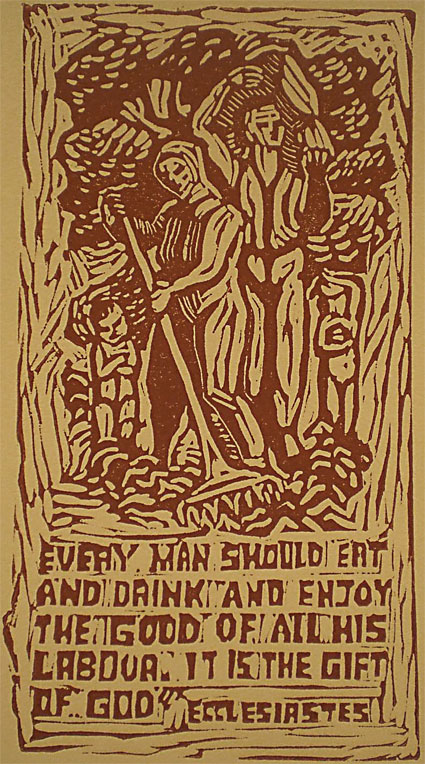
James Jordan was asked whereabouts in the Bible is the best place to start reading it:
We should start in Genesis. What we should really do is pass a law that for five years you may only read Genesis through Joshua over and over again. So you get the foundation… When the Psalms and Ecclesiastes were written, they were written for people who were steeped in the earlier Scriptures. Ecclesiastes is not some mysterious book of philosophy. Ecclesiastes is all about the Feast of Tabernacles. The Feast of Tabernacles is literally the Feast of “Clouds.” That’s what sukkoth means. You get branches down out of a tree to make a little lean-to. Those branches up on that tree are a cloud. When you make a tree-house down here out of those branches, you’ve got your own little cloud. After a week it disintegrates. But God in His cloud, in His Tabernacle, goes on and on.
Continue reading
5 comments | tags: Ecclesiastes, Feasts, Hermeneutics, James Jordan, Solomon, Tabernacles | posted in Biblical Theology, Christian Life, Quotes
Mar
8
2010

“God’s Cloud over the people forms a Great Booth, within which they live. That Cloud over them is like the glorious canopy of a leafy tree, and thus the reproduction of such an arboreal canopy is a symbol of God’s Cloud.”
An important thread of God’s methodology is His process of bringing us from slavery to Sabbath, from childhood to maturity. It begins with Creation and ends with Glorification.
The Lord speaks the Word from His glory cloud—like the Light created on Day 1—and a stagnant history begins to move forward once again. At the end of the process the Lord returns in His cloud, but it is now made of something even better. The Lord’s robe is no longer a covering of Angels but a covering of redeemed, glorified Men.
In the Tabernacle, the housebuilding process begins with the Ark as “Light” and ends with God’s Cloud—the Shekinah—resting upon it. In the Feasts, it begins with the regular Sabbath as the Creation week and ends with the Feast of Tabernacles, the greater rest. Continue reading
Comments Off | tags: Feasts, James Jordan, Tabernacles | posted in Biblical Theology
Jan
18
2010
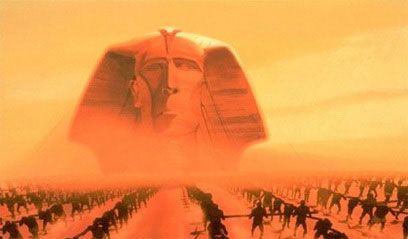
or The Sick Fix of Quick Bricks
God had repeated His promises of land and people to Isaac, but it was to Jacob that God revealed He was going to build the true Babelic tower in the Promised Land. With his head on a rough stone, Jacob saw angels ascending and descending on a stairway to heaven, a ziggurat, a constructed holy mountain, between God and man. As with Eve, the Lord would build it out of flesh and blood—Jacob’s offspring—a living Tabernacle made of precious stones mined from the Land.
Continue reading
Comments Off | tags: Babel, Compromise, Daniel, Genesis, Jacob, Nimrod, Pharaoh, Tabernacles, Temple | posted in Biblical Theology






